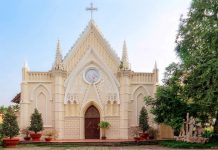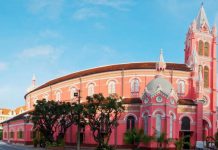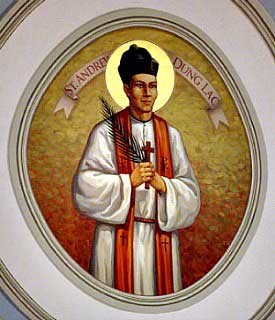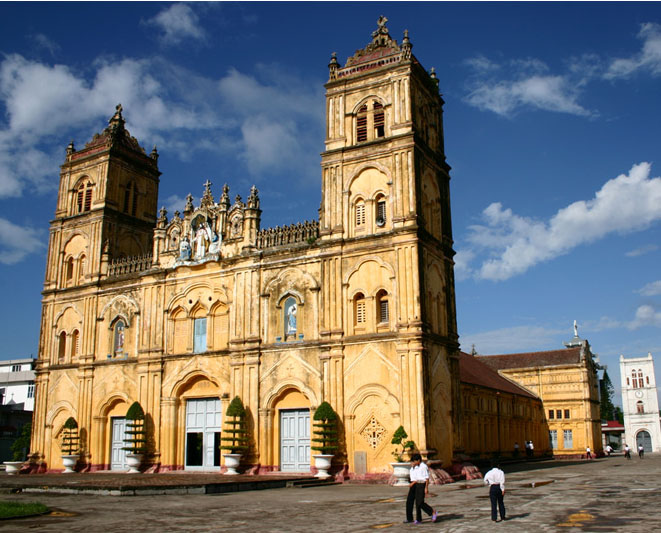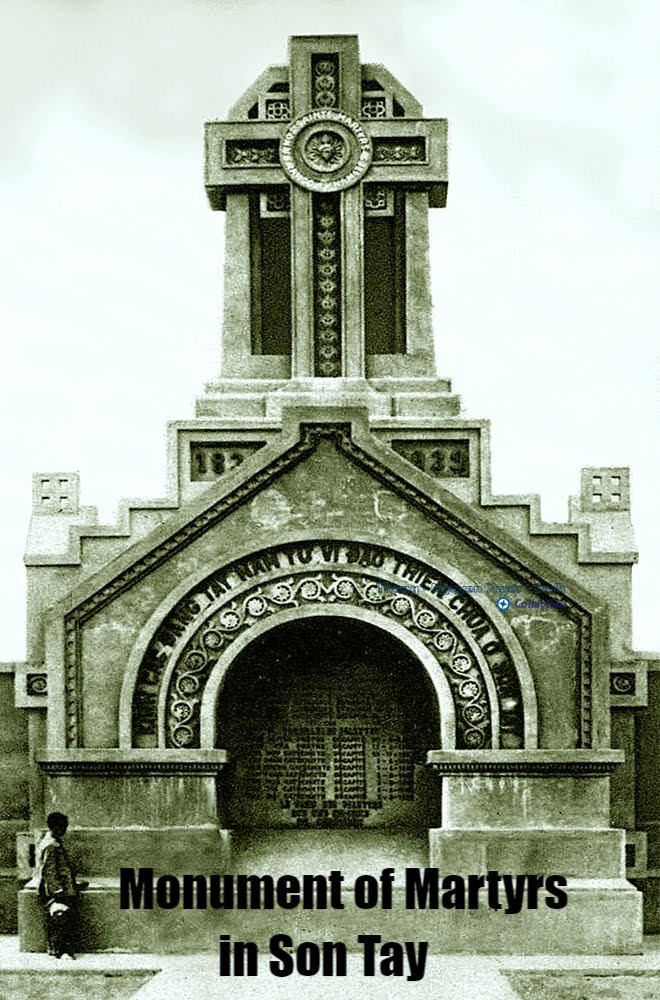While taking a pilgrimage tour in either Hanoi or Northern cities, visitors can not miss visiting the Ha Noi Cathedral and Cua Bac church, which have significant beauty regarding their artistic construction and historical stories.
1. Location
Cua Bac church (56 Phan Dinh Phung Street – Ba Dinh District – Hanoi Capital), after 19 months of restoration outside and inside under the direct direction of the guardian Joseph Nguyen Van Lien, was inaugurated November 4, 2014, with a church consecrated ceremony by the presiding of Archbishop Peter Nguyen Van Nhon. On this occasion, we would like to introduce the history and some images of the completed church.
2. History of Cua Bac church

Cua Bac church was built between 1925 and 1930, under Bishop Pierre Marie Gendreau (Đông) of the Diocese, and Father Joseph-Antoine Dépaulis (Father Huong) supervised the parish. The church is located on the land stretching along Phan Dinh Phung street and the corner of Nguyen Bien street, by the North Gate of Thang Long so people often have called Cua Bac church.
At the beginning, Cua Bac church intended to carry the holy name of the Church of the Martyrs of Vietnam. But at that time, the martyrs in Vietnam were only beatified, the Holy See asked to be renamed the Queen of Martyrs.
3. Architecture of Cua Bac church
The cathedral space is structured according to the principle of the Latin Renaissance cathedral. The opening is a small reception space, followed by space for the parishioners to hear the lecture and ended by solemn space for the priest in the Mass. Between these two areas is a large transitional space under a hemispherical dome. On the right side of the church is the place where the saints are worshiped. On the left is the reception of the pastor. Bell tower be layout on the right on the main entrance. The interior space is structured and decorated completely in the style of the European Renaissance.

Building blocks are very characteristic because the architect has created an asymmetrical architectural space with a soaring bell tower on the main hall, which makes Cua Bac church unique, compare with most of the Catholic works that have the form of symmetry built in Vietnam during the French colonial period. The oriental tile roof system is held throughout the roof through the dome to the main and secondary space is also characteristic of the building.
There are also plenty of sub-roofs to protect from sun and rain for entrances, light-colored windows, even small tile roofs that are purely decorative. The lighting and decorative door systems are particularly noticeable, first of all, the system of three rose-door – a decorative element, taking the light of Gothic architecture, placed on the western and southern façades and north. These doors are very large and are equipped with color glass.
Next is the system of windows for the bell tower, the dome and the spaces for the Mass. Thanks to this system of window, the interior of the church is always filled with natural light.
Cua Bac church is a combination of Eastern architectural elements with the principles of traditional Catholic church space, harmony of buildings with natural landscape, which has created was impressed by a Vietnamese Catholic work.
Although in an unnoticed position, Cua Bac church can still be considered one of the most beautiful French colonial buildings in Hanoi.




